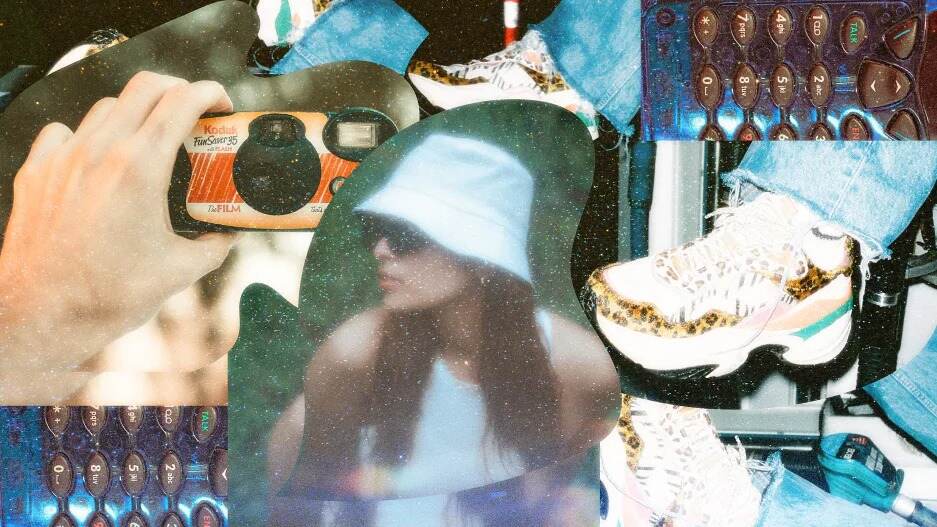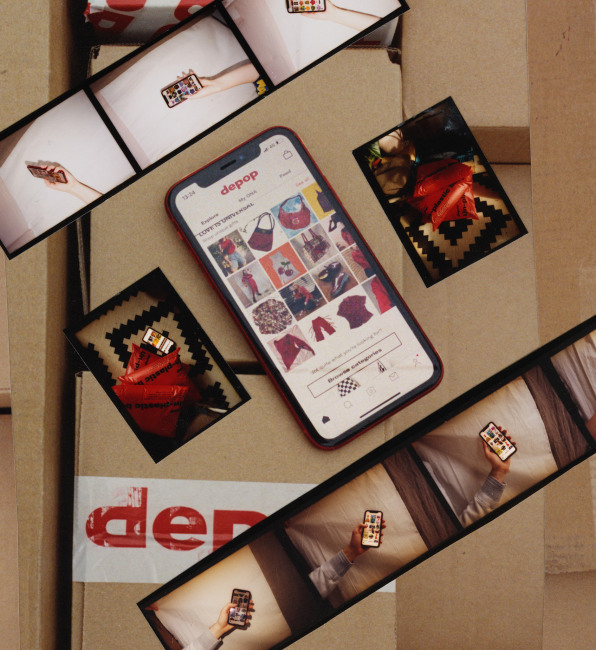- | 8:00 am
The clever ways brands are tapping into Gen Z’s obsession with nostalgia
And some cringey attempts too.

Remember the future? From jet packs to artificial intelligence, visions of tomorrow once preoccupied our collective imagination. Lately though, young people are obsessed with looking the other way.
Nostalgia is huge. Supercharged by social media, retro-gazing seems to have a grip on Gen Z consumers. Unsurprisingly, luxury brands are embracing the trend as well. T-shirts emblazoned with the cartoon characters you loved as a child now command hefty price tags; Y2K-era velour tracksuits are back; and pop culture reference points that were derided yesterday (think Paris Hilton and Ed Hardy) have acquired a renewed potency.
Some brands are throwing it back even further, building environments that re-create drive-in cinemas and launderettes—the lost social spaces of bygone eras. However, this doesn’t mean throwing it back is a cheat code for marketing success with Generation Z (people born in the late 1990s and early 2000s). Brands must understand what their audience is looking for in a nostalgia play and then work out how to feed this appetite.
HARDWIRED FOR NOSTALGIA
So what’s behind this nostalgia explosion? It’s too easy to say “the pandemic.” Yes, long periods in lockdown left many Gen Zers searching for connection and shared experiences—emotional needs that can be satisfied by looking to the past. On TikTok, the platform where many found a new kind of community during those days of social isolation, posts with a throwback element frequently go viral and #nostalgia has 18.9 billion views.
But beyond that, perhaps it’s unsurprising that Gen Zers are so keen to look back. Having grown up online, where any trend from any era is instantly accessible and social media platforms deliver an unending stream of memories, this generation is hardwired for nostalgia.

We see this reflected in the big cultural hits of recent years—TV shows like Euphoria and Stranger Things, and the music of Olivia Rodrigo—where strongly nostalgic elements inspire wild fandom. And it helps explain the thrifting boom facilitated by marketplace sites like Depop, where 90% of its users are younger than 26. As well as being more sustainable, vintage fashion keeps trends and eras alive. For Gen Z, the past is always present.
MORE THAN CUT-AND-PASTE
But pitfalls await brands that treat nostalgia like a shortcut to emotional connection. In China, luxury giants like Loewe and Gucci faced backlash from consumers who were disappointed by recent collections featuring throwback characters from Japanese anime like Totoro and Doraemon. Shoppers with high standards saw these efforts as lazy cut-and-paste licensing jobs but with a luxury price tag.
The same can be said for the recent nostalgic revisit of Friends. The iconic logo for this much-loved sitcom seems to show up on the rails of high street shops constantly—oversaturating the market and turning once highly coveted merchandise into entirely unremarkable reproductions.
For nostalgia to work best, something else needs to be going on. Tapping into a big cultural moment with a nostalgia play gives your brand an opportunity to create buzz and lead the conversation in a different direction. Moschino’s Tony the Tiger capsule collection is a prime example.
Released for Chinese New Year, it offered a fresh take on the occasion while simultaneously pulling in a wider audience by reframing a favorite character from their childhood. Drops like this show a subtler and ultimately more meaningful way for brands to celebrate collective moments.
Similarly, Tarte (the beloved noughties makeup brand) recently announced the rerelease of its cheek stains—indulging twentysomethings across the globe and allowing them to reminisce about the contents of their teenage makeup bag.
FUELING THE HYPE
The search for connected experiences among Generation Z is also often linked to hype culture—or the quest for the next big thing. Tapping into that yearning is already an established way for brands with loyal followings to achieve even greater fame. A well-judged collaboration can merge two labels’ core fans as well as invite hypebeasts along for the ride.
But adding a dash of nostalgia to the mix strengthens the formula. The recent Ganni x Juicy Couture drop, for example, brought a once-iconic Y2K brand back into the spotlight. Denmark’s Ganni put its own spin on Juicy’s throwback style, which Gen Z seems particularly in thrall to right now—currently fueling numerous memes and communities on TikTok. Cue rave reviews and a near-instant sellout.
Nostalgic launches that connect with hype culture are a great way to create a niche audience, but their success rests on playing into the memories of existing customers as well as the new ones. It’s about tapping into comforting images still lodged in their consciousness.
Look at this year’s Super Bowl ads—they all used true millennial nostalgia in some form (music, culture, fashion) to unite the 100 million people watching the spectacle.
DIALING UP THE SENSORY
But Gen Z is about more than online hype and being digitally native. Gen Zers want transparency, authenticity, and honesty from their brands. Leaning into nostalgia can help convey this, and when it comes to evoking memories, nothing beats the physical experience.
Brands with the vision to look beyond limited product releases and instead bring nostalgia into physical spaces can create an even deeper connection with this audience. This more expansive, multisensory version of nostalgia is a powerful way for storied brands to celebrate their heritage.
Balenciaga’s recent pink faux fur-clad London store launch is a knowing celebration of noughties maximalism, while fashion brand Coach built a vintage drive-in cinema for a runway show steeped in nostalgia last year. Throwing it back even further, Old Spice recently launched its own version of a traditional barber shop—paying homage to this beloved pastime with a themed retail space that hosts celebrity barbers on rotation.
Ultimately, whether online or through brick-and-mortar, nostalgia will always be part of the marketing tool kit because it’s human impulse to look back.
To use it most effectively, brands need to become more ambitious yet subtle. More culturally savvy, but authentic. And most important, they really need to know their audience—otherwise, that audience will start looking in another direction.





































